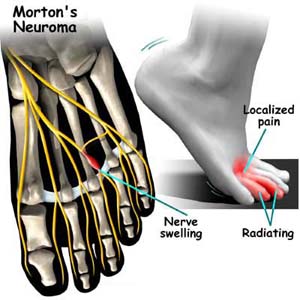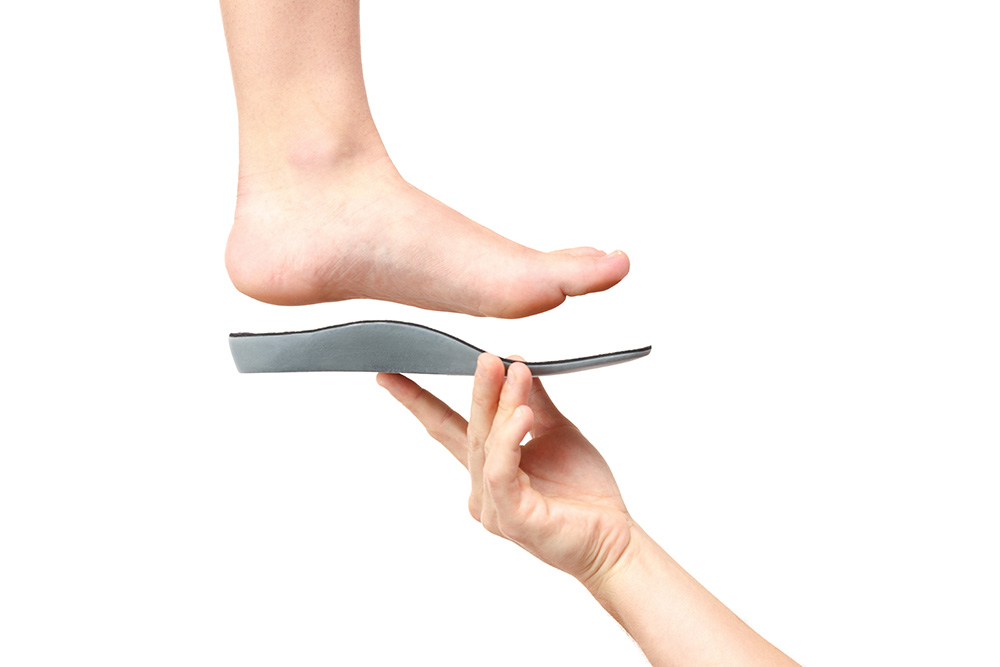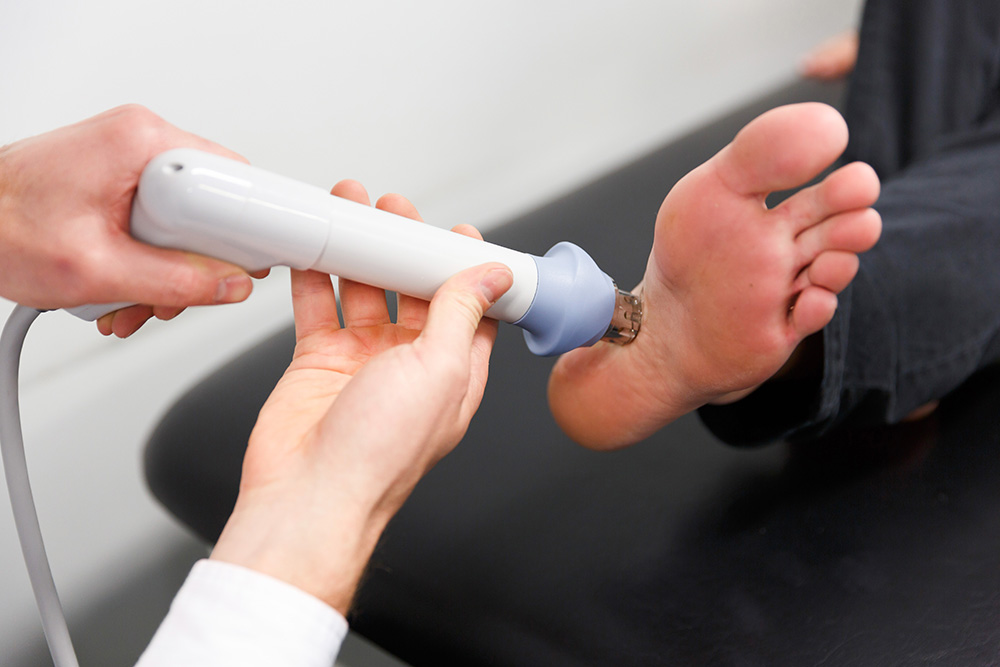
 A Morton’s neuroma can feel like a hard, painful pebble between the long bones of your feet – often between the third and fourth toes. It develops when the ‘lining’ of a nerve that runs between your toes is inflamed, pressing on the surrounding structures and causing pain.
A Morton’s neuroma can feel like a hard, painful pebble between the long bones of your feet – often between the third and fourth toes. It develops when the ‘lining’ of a nerve that runs between your toes is inflamed, pressing on the surrounding structures and causing pain.
An easy test to see if your foot pain could be a neuroma is to squeeze your foot from the sides. If this makes the pain worse, you may have developed a neuroma. Don’t worry – a neuroma should have no serious longstanding consequences once the inflammation and irritation settle. For these symptoms to settle, we use a number of specific offloading treatments that can bring tremendous relief to patients.
Symptoms
You may experience a clicking feeling in the forefoot followed by a sharp shooting pain or a sensation of numbness or pins and needles that extends into ends of the toes.
As Morton’s neuromas are often caused by repeated trauma or compression to the nerves, tight and narrow-fitting shoes can exacerbate the symptoms, which become worse after long periods of standing or walking. As the inflammation continues to increase, symptoms may become more frequent and often more intense.
 Finding The Cause
Finding The Cause
The exact cause of Morton’s neuroma can often vary between patients, so it’s essential that you have a comprehensive assessment so all of the causes can be managed. This will help alleviate your symptoms in the shortest timeframe, as well as reduce the likelihood of the neuroma redeveloping in the future.
Your assessment will involve a biomechanical and gait analysis to see whether poor foot alignment and function has contributed to your neuroma
Treating Your Neuroma
Helping relieve your symptoms can often start by having a good pair of well-fitting shoes fitted to your feet, that are wide enough and have a good toe box that doesn’t squeeze your feet and toes. A pre-metatarsal pad or dome is often an excellent way to help lift and separate the bones in the foot, giving more space to the nerve. If your foot structure and mechanics are contributing to the problem and pain, a custom orthotic is usually the most convenient and effective way to manage the problem. Sometimes, an injection of local anaesthetic and steroid is recommended to assist in settling acute symptoms – but this is not typically the first line of treatment.
Surgery
If pain persists with conservative care, surgery may be an appropriate option. The common digital nerve is cut and the Morton’s neuroma is removed. This will result in numbness along the inside of the toes affected, and there is a small chance the end of the nerve will form a Stump Neuroma.
Expected Outcome
Approximately 75% of people receive symptom resolution for Morton’s Neuroma with conservative care.








